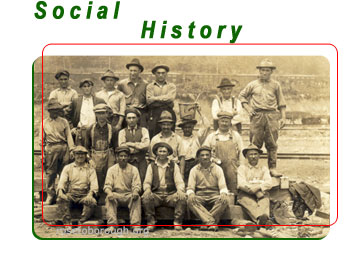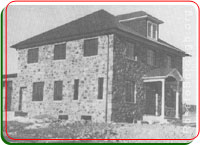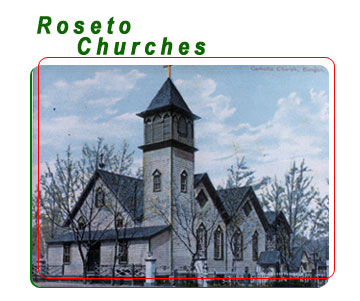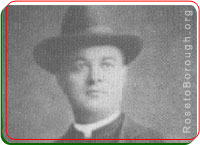History of Roseto, Pennsylvania
Roseto Borough encourages you to submit your historical facts and photos to help us accurately archive the past and capture current events. Please e-mail your submissions to rosbor@rosetoborough.org or mail us at Borough of Roseto, 164 Garibaldi Ave, Roseto, PA 18013.
We apologize in advance if any historical statements are not completely accurate and we ask for your patience as we research and update this site.
Please also visit the Washington Post story regarding the book “Outliers – The story of success by Malcolm Gladwell, which Roseto is profiled at http://www.washingtonpost.com/wp-srv/style/longterm/books/chap1/outliers.htm
For a listing of books regarding Roseto or from authors from Roseto, please see the link at…
http://www.amazon.com/s/ref=nb_sb_noss?url=search-alias%3Dstripbooks&field-keywords=roseto&x=0&y=0
Also check out the web site below regarding Roseto PA, and its Italian sister city.
http://freepages.genealogy.rootsweb.ancestry.com/~roseto/
Information obtained from:
HISTORY OF ROSETO, PA. By Ralph Basso
THE TWO ROSETOS By Carla Bianco
THE POWER OF CLAN By Stewart Wolf and John G. Bruhn
THE ROSETO STORY By John G. Bruhn and Stewart Wolf
BOROUGH OF ROSETO 75TH Diamond Jubilee Book
DON’T FORGET TO READ “QUEEN OF THE BIG TIME”
by ADRIANA TRIGIANI
And “ROSETANS” by Ann Marie Ruggiero

Roseto Incorporation
In 1912 the town’s Incorporation Committee, composed of Domenico B. Martino, Nicola DeFrank (DeFrancesco), Guseppi Policelli and Peter Rosato, petitioned the Common Pleas Court of Northampton County, and Judge Henry Scott granted consent to incorporate the Borough on January 2, 1912. Roseto became the first 100% Italian borough in the U.S.A.
First Chief Burgess
The first election was held in February and Philip Sabatino became the first Chief Burgess. Officers for the borough were elected, as well as councilmen, Constable, Justice of the Peace and tax collector. In 1962 during the term of George Giaquinto the title of Chief Burgess was changed to Mayor. There have been eleven men in the position of Chief Burgess/Mayor from the day of incorporation in 1912.

Milestones
- In 1898 Roseto had its first Post Office with Giuseppe Policelli serving as the first Postmaster.
- In 1931 a monument was erected in honor of all who served during WW I.
- In 1934 two wide roads, Garibaldi and Columbus Avenues were ordained.
- The town hall, a three story structure, was built in 1935.
- Roseto built the first athletic field in Denisco Park, now known as the Roseto Ball Park, in 1938.
- In 1945 the American Legion Post #750 was organized. Chief Burgess Ernesto Casciole and some of the borough officials were the organizers.
- In 1945 a Soldier’s Monument was erected near the municipal building where it displays the names of approximately 300 servicemen and women from Roseto who served in WWII, including the eight who lost their lives in the war. Monuments were added to honor the men and women who served during the Korean and Vietnam wars.

Mayor Charles C. Angelini
The one man who has set a record for the most number of years in office is former Mayor Charles C. Angelini, serving as Mayor a total of 28 years. Mayor Angelini, was elected in 1970, and showed leadership, good judgment and good common sense while guiding the development and progress Roseto made through all those years. He never lost an election.
Municipal Services
In 1968 the town took the bold step to install a sewer system in the borough. Michael Goffredo, Sr., Anthony Schiavone and other members had the leadership to resolve the public health problems created by poor septic systems. Roseto made one of the first inter-municipal agreements with Bangor to share in the cost of treatment of Roseto’s sewage in the Bangor Treatment Plant.

That’s a little of the past. Presently, we do not have the 100% Italian population we had when Roseto was incorporated and our population has not increased from its early days. But we have changed. We have a Municipal building with a new office and conference room. We’ve added an elevator to the building.
Our park has a kiddy area with colorful playground equipment. We have an improved baseball field and basketball court. We have a very active and well qualified Fire Dept., two private schools, three churches, an ambulance Corp, and much more. We have all those physical things and services, but most of all we have people who care for people.

Quarry Workers & Mill Workers
Before and after WWII the town saw the slate industry, which had been a major industry, employ fewer men. Small sewing factories began to grow in large numbers providing work for young men and women. The business cycle took its toll on the slate industry and the small sewing factories, leading to the present lack of industry in Roseto.

In the late 1930s and 1940s Garibaldi Avenue was a place of many businesses. The street was lined with a beauty salon, 2 barber shops, a shoemaker shop, tailor shop, 5 eating establishments, a hotel, a place where men met to play Italian card games and socialize, 3 butcher shops, 7 grocery stores, 3 drinking bars, an Ice Cream and Candy store, 2 bakeries, blacksmith shop, and a gift shop.
Today there remain a barber shop, a restaurant, a bakery, and on Dante Street, Ruggiero’s Italian Market. All the other places of business are gone.
There is a strong growing need to establish a new industrial base so our small town will not become a place where all our young men and women leave to seek a better place to live while providing for their families. This same trend caused deserted streets in Roseto Valfortore, Italy.

Marconi Club & Redmen Lodge
In 1903 the “Marconi Club” was formed. Its mission, as well as the missions of the Redmen Lodge and the Sons of Italy, was to bond relationships between the Roseto Italians and surrounding communities, and to promote better intellectual and moral conditions.
Dr. Wolf Books
In the early 1960s, Dr. Stewart Wolf and Dr. John Bruhn began their research studying a unique feature of Roseto, Pennsylvania. Their study was to determine how the effects of family bonds and the strong social values contributed to the low incident of coronary heart disease and sudden death. In spite of the fact that risk factors such as smoking, lack of exercise and high fat diet were found as great as in other communities, the outstanding difference was the family-oriented social structure that controlled the way of life for Rosetans.

Family
Their study also showed that social change and an Americanized system of values and behavior removed the healthy heart that Roseto was noted to have. While younger Rosetans held respect for old-traditions they did little to live by them. Abandonment of old standards led the death rates from heart attack to climb to the levels of surrounding communities.
Gardens
Gardens that were in every back yard providing food in the summer and produce that was canned for meals in the winter are slowly disappearing. Grape vines and arbors that produced succulent and plentiful grapes that were used for the making of wine, grape jelly and juice are gone. The process of making wine: picking the delicious bunches of grapes, crushing and squeezing them, created happy times. The sobering part was the competition of making the best wine in town. Everyone wanted the bragging rights to that title. Families also raised goats, chickens and pigs to supplement their diets.

One Room School House
In the early settling of Roseto, there were several one-room schoolhouses. One was located on the corner of what is now Columbus Avenue and Route 191, one was on Front Street, and one on North Street.

Columbus School – 1913
After Roseto was incorporated in 1912, the Columbus Public School was built providing education for children in grades 1 through 8. After graduating from the 8th grade the children went to Bangor High School to continue their education. Columbus School became a part of the Bangor Area Jointure School system. In 1978 the Bangor Area School District decided to close Columbus School, declaring the school unusable. The school was deeded back to Roseto.
Faith Christian School
Today, Faith Christian is operating the school and has created a good educational environment for a large number of students in this private school.

Priests
The town matured through wars, depression, economic highs and lows. It always stayed its course on tradition and supportive family values. Our community never forgot the valuable advice Fr. DeNisco gave our town many years ago when he urged parents to send their children to school. We have always supported education, whether it is public or parochial, and parents continue to encourage their children to go to college. Our town has evolved through all the economic cycles, wars, political ups and downs, and changes in its ethnic population. Through the years of changes there still remain the traditions and family support system that was instilled in us from generation to generation.
Father Ducci and his assistant Father Leone, the resident priests of Our Lady of Mt. Carmel Catholic Church, were the moving forces in fulfilling Father DeNisco’s educational dream for the members of the community.
Convent
In 1940 a convent was built, which housed the nuns and included a classroom for kindergarten.

Our Lady of Mount Carmel School
By 1945 Our Lady of Mt Carmel School had grades K through 8.

PIUS X
A few years later in 1947 Puis X High School was built. The teachers for the elementary school at that time were the Salesian Sisters whose Mother House was in Haledon, NJ, and the St. Joseph nuns taught at Pius X. Pius X has since become a diocesan school. Two Sisters of Charity who will be teaching at Pius X High School presently occupy the old convent.


Presbyterian Church
The first Presbyterian Church was founded with the help of Emmanuelle Tealdo, first minister. Michaelangelo D’Uva was given credit for having the people of New Italy attend a Presbyterian church at Five Points, in Upper Mt Bethel Township. In 1893 the Presbyterian Church was constructed on Garibaldi Avenue in Roseto. It was a one room building. The Presbyterian mission was chartered with sixty four members. In the 1930s & 1940s Rev. Cyrus Scapellati had a strong influence on the advancement and spiritual growth of the members of the Presbyterian Church in Roseto. It is still an active church with a small membership and a visiting minister.
Bangor-Roseto Parish
The Presbyterian Parish of Bangor-Roseto, located on Kennedy Drive in Roseto, is a merger of both the Bangor and Roseto parishes and occurred in January 1972.
1st Catholic Church
The only Catholic Church was in Easton and a petition for a mission church was not approved until 1896. A majority of the Rosetans was of the Catholic faith and they felt a need for their own church, so in 1893 the church members built a church of wood.
Current Catholic Church
In 1923 they built the stone church in its present location.

Father Denisco
In 1897 Roseto had its first permanent resident Catholic priest, Father Pasquale De Nisco. He was responsible for instructing and preparing for citizenship hundreds of people, both Catholic and Protestant. He was convinced that Roseto could not progress without an educated citizenry and urged parents to send their children to school. He was the force behind Roseto’s becoming an independent borough. A protector of workers’ rights, he organized a branch of the American Federation of Labor. Through the strike directed by the Catholic priest, the daily pay rose from $.85 to $1.50. Father DeNisco was a strong leader, not just a spiritual leader but a leader who directed all the activities of Roseto and pushed Roseto into the future. When he died in 1911 Catholics and Protestants, as well as many prominent officers of Northampton County attended his funeral.
Procession

The highlight of each year is the civil and religious celebration held by Our Lady of Mt Carmel Catholic Church. The tradition of the celebration was a carry-over from Roseto Valfortore in Italy.
In July of 1895 Rosetans held their first spiritual celebration to honor the Blessed Mother of Jesus. The “Big Time” attracted people from as far as Canada and many relatives and friends came to take part in the celebration. The carnival grounds were filled with sideshows, rides, high-wire trapeze acts, a man shot out of a cannon and ended with a big display of fireworks. Italian foods were sold in large quantities and the celebration garnered large amounts of money to support Our Lady of Mt. Carmel Catholic Church. Since then it has become a 3-day civil festival known as “The Big Time,” a 2-day spiritual celebration with a Saturday night crowning of the festival queen and a parade down Garibaldi Avenue, culminating with the crowning of Our Lady of Mt. Carmel and a religious procession Sunday afternoon in her honor. All the proceeds now benefit Our Lady of Mt. Carmel elementary school.

Kingdom Hall
The Jehovah’s Witnesses, discontented Presbyterians who converted to the Jehovah’s Witnesses religion, built the Kingdom Hall on Garibaldi Avenue in 1926, and the religious teaching was promoted by their leaders Donato Tedesco, Domenico Finelli, and Pasquale Ninno. They were members of the Presbyterian Church who decided to change their spiritual beliefs. The original building on Garibaldi Avenue has been converted to a residence.
New Kingdom Hall
A new and larger Kingdom Hall is located on Rt. 512 in Washington Township
